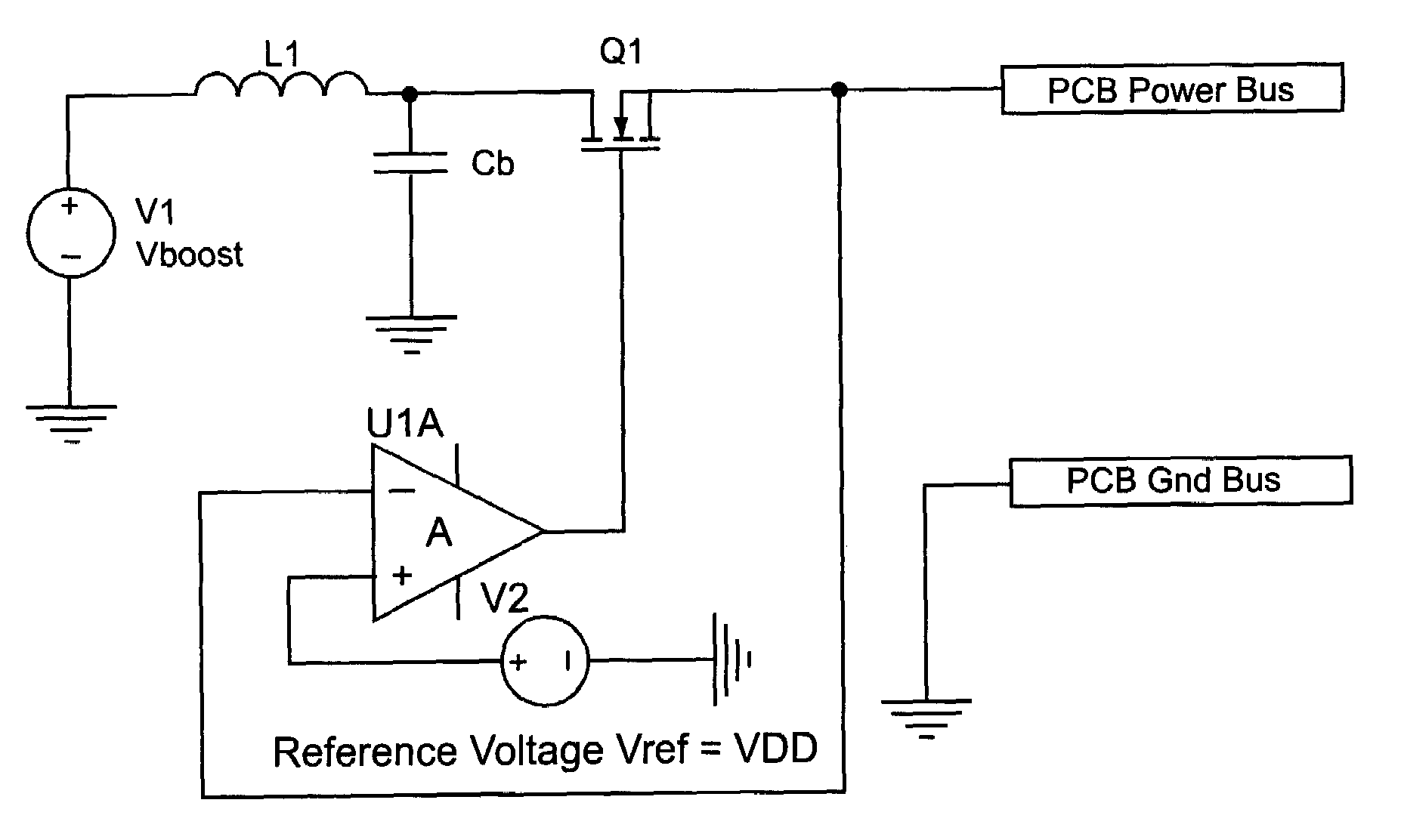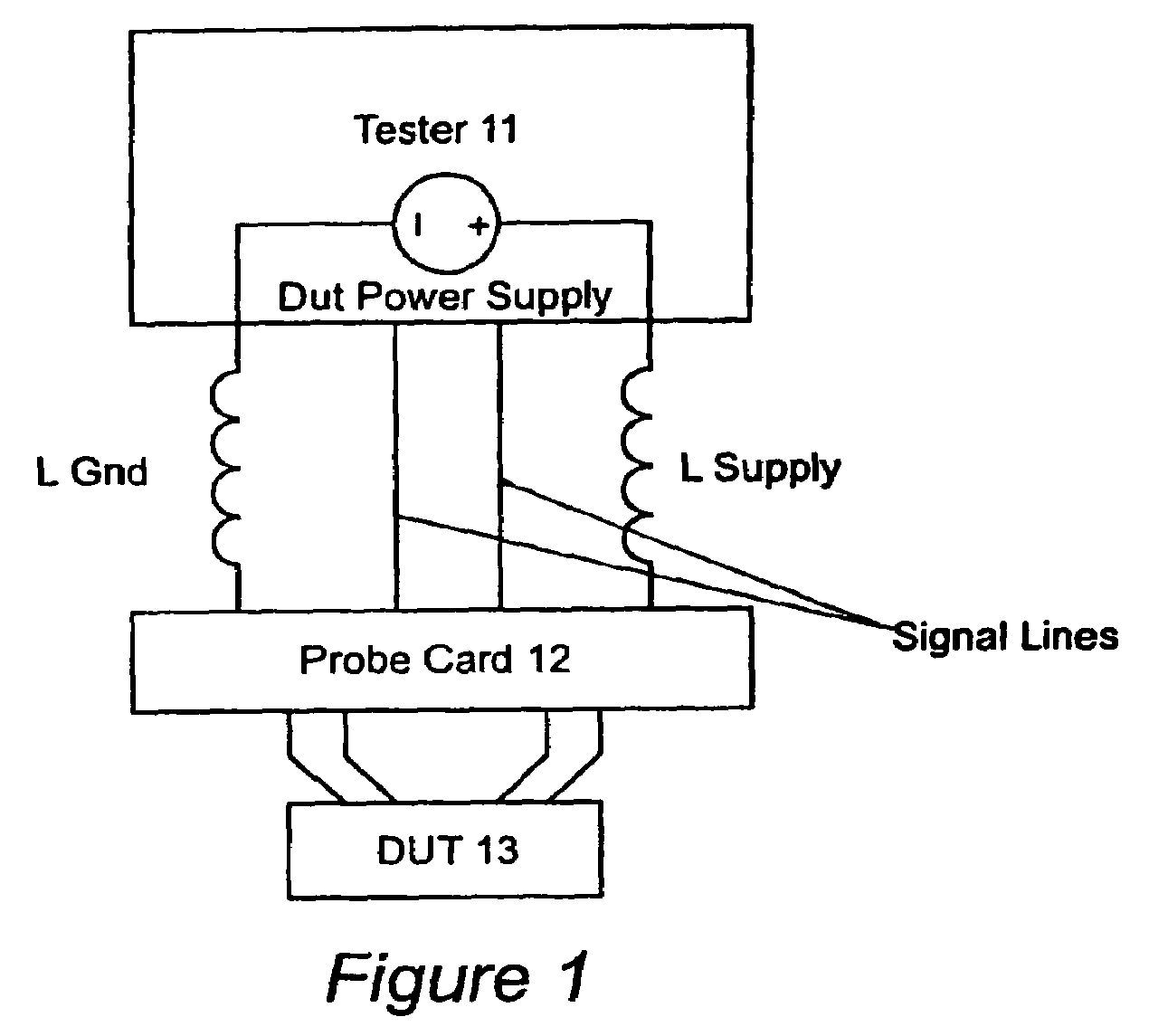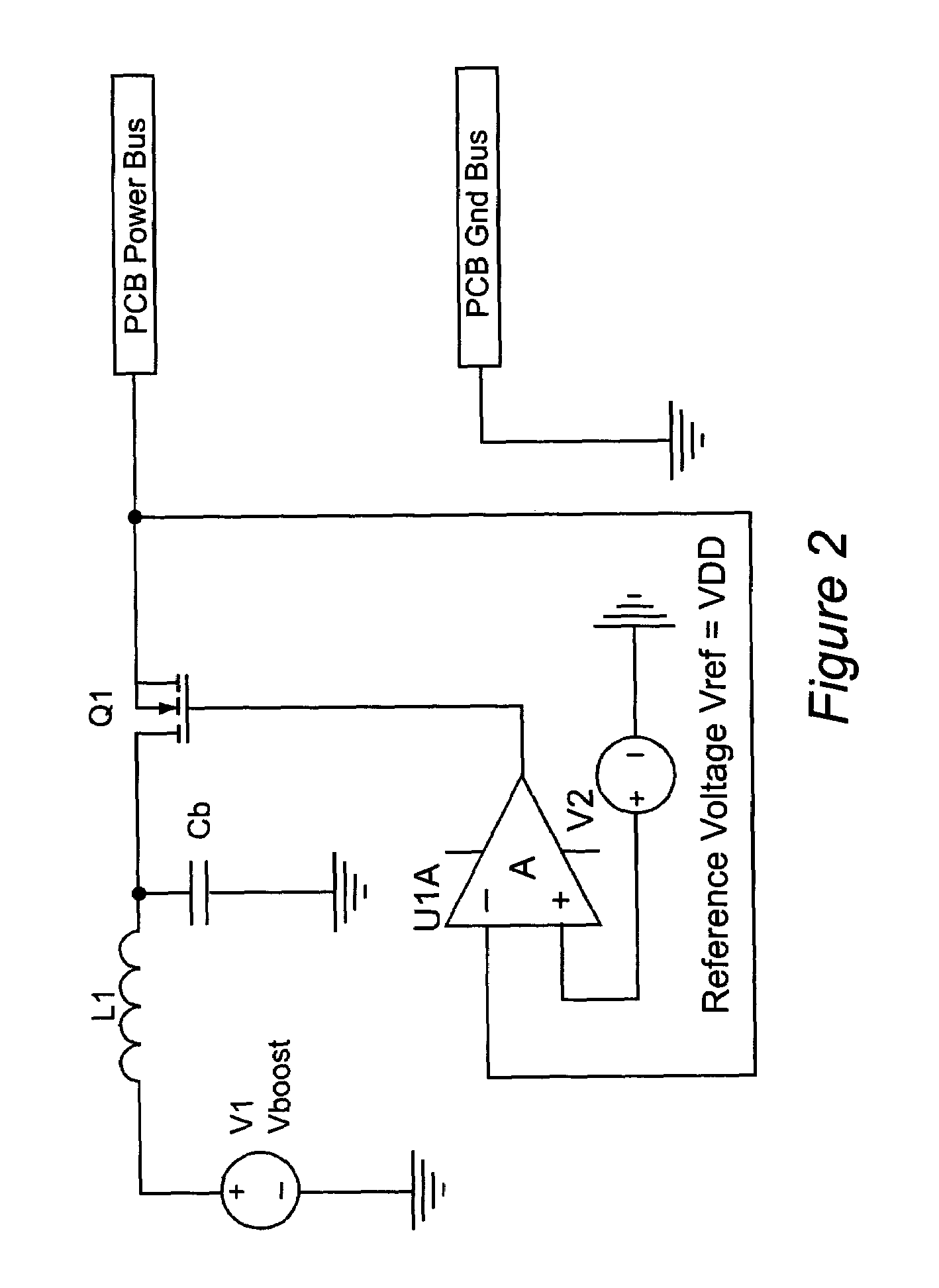Device for probe card power bus noise reduction
a power bus and power supply technology, applied in the field of electronic circuit testing, can solve the problems of inability to fully compensate the noise spike, the noise pulse the noise spike produced by the sequence, so as to reduce the power supply spike of the probe card and improve the regulation of the voltage bus
- Summary
- Abstract
- Description
- Claims
- Application Information
AI Technical Summary
Benefits of technology
Problems solved by technology
Method used
Image
Examples
Embodiment Construction
[0021]Referring now to the drawings, and more particularly to FIG. 1, there is shown a system for testing integrated circuits. In its most basic form, the system consists of a tester 11, probe card 12, and integrated circuit 13, or DUT. The tester provides both power and stimulus to the DUT. The probe card provides the interface between the tester and DUT, and includes a power distribution system, which often includes passive elements mounted on the probe card (capacitors) to control the size of power system noise spikes caused by the DUT during operation. Also indicated in FIG. 1 is the connection inductance that the interface introduces between the tester power supply and the probe card. When the DUT supply current changes, this connection inductance (L Supply and L GND) can cause significant voltage noise spikes to appear across the power bus system of the probe card. One source of change in the DUT supply current is the application of structural test patterns to the DUT. In a st...
PUM
 Login to View More
Login to View More Abstract
Description
Claims
Application Information
 Login to View More
Login to View More - R&D
- Intellectual Property
- Life Sciences
- Materials
- Tech Scout
- Unparalleled Data Quality
- Higher Quality Content
- 60% Fewer Hallucinations
Browse by: Latest US Patents, China's latest patents, Technical Efficacy Thesaurus, Application Domain, Technology Topic, Popular Technical Reports.
© 2025 PatSnap. All rights reserved.Legal|Privacy policy|Modern Slavery Act Transparency Statement|Sitemap|About US| Contact US: help@patsnap.com



